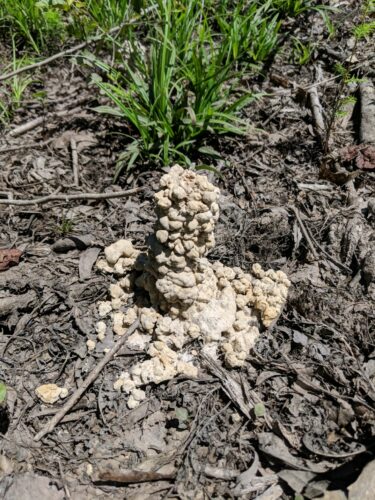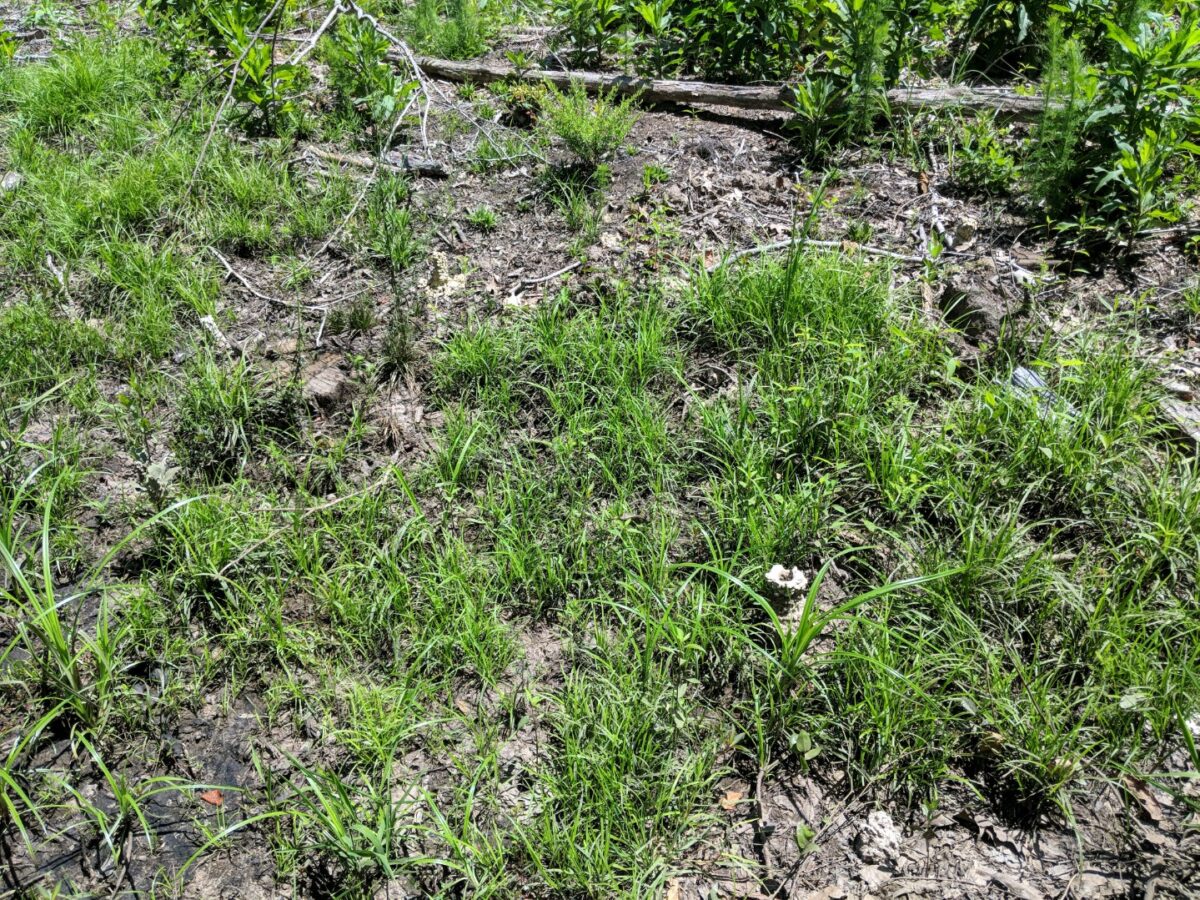Field Notes: Castles in the Field
August 13, 2018 2:11 pm

by Senior Area Forester Scott Bachman
In my youth I spent hours playing in the creeks around my home. I grew up in an area where streams were full of rocks and fast-flowing, cool water. Back in the day we would turn over the rocks and try to catch the crayfish lurking underneath. The plan was to wait for the water to flush out the stirred up silt and then grab the crayfish (or crawdad, if you like) behind the pincers without getting clawed. Sometime we were successful and other times we would let out a yelp and the crawdad would swim free. I now live in an area where the water is slow flowing and tannin-stained. There are no rocks to turn over to catch crayfish; but I know they make their homes in our slow water streams. How can I tell?
Like me as a kid, you may have seen chimney-like spires of dirt in wet areas along streams. We called them snake holes, not knowing what they really were. Somewhere along my way in life I learned that these chimneys were not made by snakes but rather by the very crayfish we tried to catch. The other day while doing a GPS job for a Riparian Buffer Tax Credit, I noticed perhaps hundreds of these chimneys in the drying soil of the harvest area. It got me thinking that I really don’t know much about crayfish and their place in Virginia’s fauna.

I called my friend Eric Brittle, a Fisheries Biologist with the Virginia Department of Game and Inland Fisheries (DGIF), to see what he knew about crayfish. It was a very rainy day when we talked on the phone or I would not have caught him in the office. He said, “I’m looking at the DGIF Crayfish poster right above my desk. It shows 25 of the native species of crayfish in Virginia as well as four non-native crayfish.” Eric is a fin fish biologist, not an invertebrate specialist, but he did know one thing for sure: if you want to catch large mouth bass (a non-native fish on the Atlantic slope of Virginia, by the way…that’s a story for another time) or bowfin during crayfish molting season, use a crayfish pattern lure! He told me that predator fish will nearly switch their diet completely to take advantage of the tasty, newly molted crayfish.
All crayfish are crustaceans. They have an exoskeleton just like their saltwater cousins, blue crabs and lobsters. As a crustacean, they can grow only by shedding their exoskeleton to allow room for growth. According to Brian Watson, the DGIF biologist assigned to invertebrates, on average, a crayfish will molt two times as they go between stages of reproductive to non-reproductive living. After molting a crayfish is very vulnerable to predators. Their shell is soft and the big claws are of little use fending off a raccoon or a hungry fish. This is why Eric suggested using a crayfish lure for that lunker bass.
Well back to the crayfish castles that started this whole thing. I never really knew what the purpose of these little stacks of mud was. It turns out that they really don’t have a purpose other than that they represent the housekeeping duties of the occupant. According to the Mountain Lake Biological Station of the University of Virginia, The Appalachian brook crayfish, just one of our crayfish species in Virginia, (current taxonomy according to Brian Watson shows that Virginia has 27 native and 6 non-native crayfish. This may change with better biology) can dig a burrow in the bottom of the creek that can go as deep as 1 meter (that’s a little over three feet to us non-research folks)! If they have an opening on dry land the castings or dirt from keeping their burrow open are forced out of the hole and form the castles. If the hole is in flowing water the sediment is simply washed down stream. 
Crayfish, like other underground dwellers, may have more than one opening to their burrow. In the case of crayfish, their burrow must be below water level since they breathe through gills like fish.
Crayfish are solitary animals, living alone in their burrow. The crawfish do venture out of their homes to find food and a mate. When the water temperature is correct, these freshwater lobsters reproduce. The female will hold her fertilized eggs under her tail until the young emerge from the egg. They will stay with the female until they molt for the third or fourth time. Then it is off to find their way in the world. If they do not leave the natal burrow, mom is more than likely going to eat them!
Crayfish have a wide diet. They are predatory and will eat anything they can catch. They will eat tadpoles, small fish, insects and other small creatures. They also eat plant material. They are an important part of the food web, breaking down dead fish and other animals in their environment and cycling the nutrients.
So the next time you are out in the field (or if you are like a lot of folks in Tidewater right now mowing their saturated lawns) and see castles of mud, know there is a crayfish down there somewhere doing their part to keep our world going.
In parting, Eric told me that his grandmother told stories of “fishing for crayfish” as a young girl. She would find a crayfish mound and lower a bit of meat scrap like bacon fat tied on a string into the hole. A steady slow pull on the string would sometime bring a crayfish to the surface. I’m not sure I am that patient even if they do taste like lobster. It sure would take a lot of them to make a meal.
Tags: Wildlife
Category: Education
